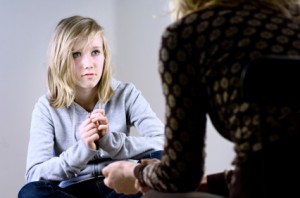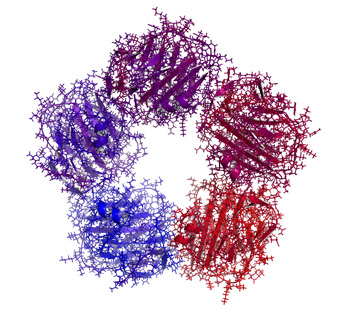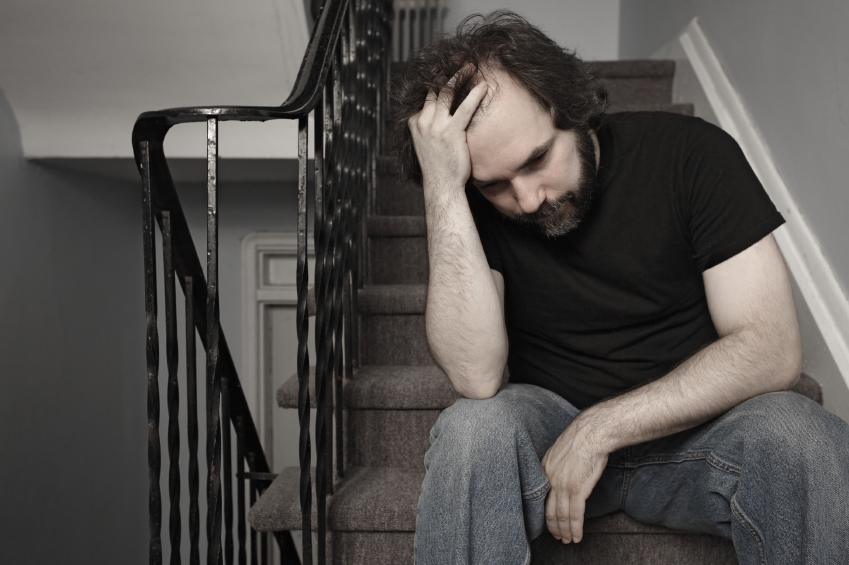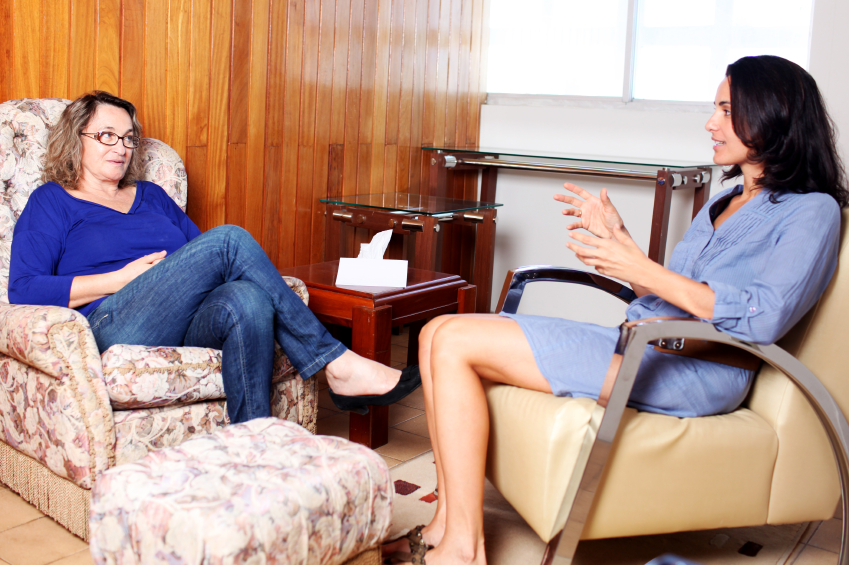The Need for Psychotherapy for Bipolar Disorder
Highlights from the International Society for Bipolar Disorders Conference Posters and Presentations, Chicago, June 22-25, 2023
Greg Murray gave a talk on effectiveness of multiple types of psychotherapy for bipolar disorder and suggests that the choice be designed for each individual.
He describes 10 core elements of each type of therapy. These included dealing with:
- 1. Knowledge, acceptance, and adherence
- 2. The presence of anxiety in some 90% of patients
- 3. Suicidality and crisis management
- 4. Skills: monitoring, relapse prevention, life time events, recognition of early symptoms
- 5. Identity, cognitive restructuring, dealing with stigma, train action and achievement, confronting perfectionism, CBT
- 6. Sleep and circadian rhythms
- 7. Trauma, child adversity, PTSD
- 8. Emotion regulation
- 9. Relationships: social, family, occupational roles (family or group)
- 10. Substance use and avoidance, access, motivational interviewing, impulsivity
Baseline Levels of CRP Could Help Predict Clinical Response to Different Treatments
C-reactive protein, or CRP, is a marker or inflammation that has been linked to depression and other illnesses. People with high levels of CRP respond differently to medications than people with lower CRP, so assessing CRP levels may help determine which medications are best to treat a given patient.
High baseline levels of CRP (3–5pg/ml) predict a poor response to selective serotonin reuptake inhibitor antidepressants (SSRIs) and to psychotherapy, and are associated with increased risk of recurrent depression, heart attack, and stroke.
However, high baseline CRP predicts a better response to the antidepressants nortriptyline and bupropion. High CRP is also associated with better antidepressant response to infliximab (a monoclonal antibody that inhibits the inflammatory cytokine TNF alpha), while low levels of CRP predict worsening depression upon taking infliximab.
High baseline CRP also predicts good antidepressant response to intravenous ketamine (which works rapidly to improve treatment-resistant depression), minocycline (an anti-inflammatory antibiotic that decreases microglial activation), L-methylfolate (a supplement that can treat folate deficiency), N-acetylcysteine (an antioxidant that can improve depression, pathological habits, and addictions), and omega-3 fatty acids (except in people with low levels of DHA).
High baseline CRP also predicts a good response to the antipsychotic drug lurasidone (marketed under the trade name Latuda) in bipolar depression. In people with high baseline CRP, lurasidone’s positive results have a huge effect size of 0.85, while in people with low CRP (<3pg/ml) the improvement on lurasidone has a smaller effect size (0.35).
In personal communications with this editor (Robert M. Post) in 2018, experts in the field (Charles L. Raison and Vladimir Maletic) agreed that assessing baseline CRP levels in a given patient could help determine optimal strategies to treat their depression and predict the patient’s responsiveness to different treatment approaches.
At a 2018 scientific meeting, researchers Cynthia Shannon, Thomas Weickert, and colleagues reported that high baseline levels of CRP were associated with symptom improvement in patients with schizophrenia when they were treated with the drug canakinumab (marketed under the trade name Ilaris). Canakinumab is a human monoclonal antibody that targets the inflammatory cytokine interleukin-1 beta (Il-1b). Il-1b is elevated in a subgroup of patients with depression, bipolar disorder, or schizophrenia, and CRP levels are an indication of the associated inflammation.
Evidence-Based Psychotherapies for Young Children
 As many as 7–10% of children under the age of 5 have mood or behavioral problems, and this risk is even higher when a parent has a mood disorder. However, many families are not able to access treatment for these children due to their location, a lack of providers, or insurance problems.
As many as 7–10% of children under the age of 5 have mood or behavioral problems, and this risk is even higher when a parent has a mood disorder. However, many families are not able to access treatment for these children due to their location, a lack of providers, or insurance problems.
A 2016 article by Mary Margaret Gleason and colleagues in the journal Technical Report in Pediatrics summarizes psychotherapeutic treatments for children that are supported with rigorous evidence. Some of these include infant-parent psychotherapy, video feedback for positive parenting, attachment biobehavioral catch-up (or ABC, in which caregivers are taught to re-interpret the signals of children who previously experienced maltreatment, providing nurturing in response), parent-child interaction therapy, and programs that combine parenting support with illness prevention, such as the Incredible Years series (for behavioral difficulties), the New Forest Programme (for attention-deficit hyperactivity disorder or ADHD), and Helping the Noncompliant Child (for oppositional behavior).
Gleason and colleagues suggest that pediatricians should take the lead in assessing young children and recommending appropriate psychotherapeutic approaches.
One resource available to parents is our own Child Network. It consists of an online portal where parents can provide weekly ratings of their children’s symptoms. These can be provided to the child’s physician to facilitate diagnosis and to clinicians to more effectively evaluate the results of treatment. The data provided to the Child Network will in turn help us understand how children are being treated in the community. There a few initial forms to fill out, but the weekly rating process is quick and can provide a great picture of a child’s wellbeing over time, including evaluating the effectiveness of any treatments.
Psychotherapy Improved Depression, Reduced Inflammation
A recent study shows that psychotherapy can not only improve depression symptoms, but may also reduce the inflammation that often accompanies them.
Researcher Jean Pierre Oses and colleagues randomly assigned participants with depression to receive Supportive-Expressive psychodynamic therapy, which is designed to help patients understand conflictual relationship patterns, or an alternative therapy. Among the 47 participants who received Supportive-Expressive therapy, depression improved significantly after 16 sessions, and blood levels of the inflammatory markers interleukin-6 and TNF alpha also dropped.
The research was presented at the 2016 meeting of the Society of Biological Psychiatry.
Psychotherapy Improves Outcomes for People with Bipolar Disorder
Studies have shown that therapy can be helpful for people with bipolar disorder. In a 2016 article in the British Journal of Psychiatry, researchers led by M. Oud described the findings of their systematic review of studies evaluating different types of therapy for bipolar disorder. The research team reviewed the findings of 55 randomized controlled trials of psychotherapeutic interventions that included a total of 6,010 adult participants with bipolar disorder. The team found moderate-quality evidence that psychological interventions reduced relapses following treatment, and that collaborative care reduced hospital admissions for adults with bipolar disorder. Oud and colleagues found lower-quality evidence that group interventions reduced depression relapses following treatment, and that family psychoeducation reduced symptoms of depression and mania.
The reseachers concluded that there is evidence that therapy can be helpful for people with bipolar disorder. Since some of the evidence was of low quality, more research is needed to identify the most effective therapies for different phases of bipolar disorder.
Editor’s Note: The data are clear that therapy is helpful. In particular, one approach worth emulating is that described in an article by Lars V. Kessing and colleagues in the British Journal of Psychiatry in 2013. They found that comprehensive care in an outpatient mood disorder clinic, which included psychotherapy, psychoeducation, mood monitoring, and drug treatment, reduced relapses significantly compared to treatment as usual.
Omega-3 Fatty Acids Associated with Small Improvement in Depression in Children Aged 7–14
At the 2015 meeting of the American Academy of Child and Adolescent Psychiatry, researcher Mary A. Fristad reported that omega-3 fatty acid supplements had a small beneficial effect on depression in children aged 7–14. The supplements did not noticeably improve bipolar disorder not otherwise specified (NOS) or mania. The supplements consisted of several types of omega-3 fatty acids, including 1400mg of EPA, 200mg of DHA, and 400mg of others per day. The children were also undergoing psychotherapy during the study.
Several Types of Psychotherapy Effective in Childhood Bipolar Disorder
Childhood onset bipolar disorder can be highly impairing. Treatment usually includes medication, but several types of psychotherapy have also been found to be superior to treatment as usual. These include family focused therapy, dialectical behavior therapy and multifamily psychoeducation groups, including Rainbow therapy.
Family focused therapy, developed by David Miklowitz, consists of psychoeducation about bipolar disorder and the importance of maintaining a stable medication routine. Families are taught to recognize early symptoms of manic and depressive episodes, and how to cope with them. Families also learn communication and problem solving skills that can prevent stressful interactions.
Dialectical behavior therapy was developed by Marsha Linehan, initially for the treatment of borderline personality disorder. It can be useful in bipolar disorder because participants learn how to manage stressors that might otherwise trigger depression or mania. DBT teaches five skills: mindfulness, distress tolerance, emotion regulation, interpersonal effectiveness, and self management.
Multifamily psychoeducation was developed by Mary Fristad. In groups, children and parents learn about mood disorders, including how to manage symptoms, and also work on communication, problem solving, emotion regulation, and decreasing family tension.
Rainbow therapy is a type of multifamily approach also known as child and family-focused cognitive-behavioral therapy (CFF CBT). It integrates individual cognitive-behavioral therapy with family psychoeducation and mindfulness skills training. In a recent article in the journal Evidence Based Mental Health, Miklowitz reviewed the current research on Rainbow therapy. While the research to date has many limitations, he highlighted some benefits of Rainbow therapy: its flexibility, and its focus on treating parents’ symptoms along with children’s illness.
Psychotherapy of Childhood Bipolar Disorder
At the 2014 meeting of the American Academy of Child and Adolescent Psychiatry, there was an excellent symposium on different psychotherapeutic approaches for children and adolescents with bipolar disorder and related illnesses.
Amy West of the university of Illinois at Chicago started off this symposium by describing the effectiveness of child-and family-focused cognitive-behavior therapy or what is sometimes called RAINBOW therapy. Rainbow stands for Routine, Affect regulation, I can do it, No negative thinking, Be a good friend and balance life stressors, Oh how can we solve problems, and Ways to find support.
West emphasized the importance of routine in sleep, diet, medications, and homework, and indicated that frequent soothing is necessary. Posted reminders are also helpful.
Affect regulation can be encouraged by promoting coping skills, particularly around identifying what triggers mood swings and rage attacks and creating plans for dealing with them.
“I can do it” reminds parents and children to focus on strengths, successes, positive feedback, and the ability to call for help.
“No negative thinking” encourages positive restructuring and reframing of negative perspectives. Part of this includes mindfulness training for children and parents, who are taught to focus on breathing and accepting thoughts and emotions.
Being a good friend focuses on listening, engaging friends, and enhancing communication.
“Oh how can we solve problems” reminds families to have an attitude of problem solving.
Remembering ways to find support reminds parents to connect with relevant resources, and also coaches parents to be advocates for their children.
In a randomized study of 12 sessions of child and family focused cognitive behavior therapy, the children did much better than those receiving treatment as usual and showed greater improvement in mania and depression as well as overall functioning.
The second presentation was given by Mary Fristad of Ohio State University. She treated children with bipolar disorder not otherwise specified (BP-NOS) with psychotherapy and omega-3 fatty acids. Some research had suggested the efficacy of omega-3 fatty acids in childhood mood disorders and a much larger literature was positive in adult mood disorders. Given the safety of the manipulation, she felt it was worth trying in young children and those with BP-NOS who are rarely studied formally. She also cited a 2010 study by Amminger et al. in children who were at ultra high risk for schizophrenia. In that study, patients were randomized to 12 weeks of omega-3 fatty acids or placebo, and omega-3 fatty acids were associated with a very low conversion rate to full-blown psychosis, 4.9%, compared to 27.5% for those receiving placebo. Fristad’s psychotherapy also emphasized education, support, and skill building in order to enhance understanding of the illness and its treatment. This would help ensure better compliance and better treatment outcome. Her formal treatment manual is available at www.moodychildtherapy.com.
Fristad randomized children with bipolar not otherwise specified, average age 10.2 +/- 0.2 years to either her psychotherapy plus omega-3 fatty acids or therapy plus placebo. Therapy plus omega-3 was much more effective on most outcome measures.
Editor’s Note: Given the safety of omega-3 fatty acids, even these limited data would appear to justify their use in children with BP-NOS in the context of psychotherapy and psychoeducation.
The third presenter was David Miklowitz of UCLA who discussed family focused therapy. This approach has proven effective in studies of both adults and adolescents with bipolar disorder, and as well for those with prodromal symptoms. Read more
Psychotherapy More Effective Than Collaborative Care in Bipolar Depression with Anxiety Disorder Comorbidity
The Systematic Treatment Enhancement Program for Bipolar Disorder (STEP-BD), a long-term study of treatments for bipolar disorder, recently found that psychotherapy was more effective than their normal collaborative care model (consisting of regular illness evaluation and treatment) for patients with bipolar disorder and a current or lifetime presence of an anxiety disorder.
An anxiety disorder comorbidity is consistently associated with a poor outcome in patients with bipolar disorder. In a 2014 article by Deckersbach et al. in the American Journal of Psychiatry, the STEP-BD research group reported that the effect of psychotherapy was particularly strong in those with comorbid post-traumatic stress disorder (PTSD) or generalized anxiety disorder.
While antidepressants are typically used to treat anxiety disorders in unipolar depression, this has not been proven effective in bipolar disorder. Not only do patients with bipolar disorder tend to respond poorly to antidepressants, but in research collected by this editor Robert Post and colleagues in the Bipolar Collaborative Network, patients with bipolar disorder who had an anxiety disorder fared even more poorly on antidepressants as adjuncts to mood stabilizers than those with bipolar disorder without an accompanying anxiety disorder.
The poor response to antidepressants in bipolar depression in general, and particularly in those with a comorbid anxiety disorder, together with the finding that psychotherapy is highly effective, suggest that adjunctive psychotherapy is a more appropriate choice for patients with bipolar depression and a comorbid anxiety disorder.
The choice of the best pharmacological treatment of this comorbid anxiety disorder deserves specific comparative study. Candidates would include the mood stabilizing anticonvulsants valproate, lamotrigine, and carbamazepine; the atypical antipsychotics with efficacy in bipolar depression (quetiapine, lurasidone, and olanzapine combined with fluoxetine); and those used as an adjunct in unipolar depression (quetiapine again and aripiprazole).
Different Psychotherapies for Different Illness Characteristics
Psychotherapy can play an important role in treating mental illness. At the 2014 meeting of the International Society for Bipolar Disorders, researcher F. Colom gave a plenary talk indicating that just like pharmacotherapy, psychotherapy should differ depending on characteristics of the illness—both its severity and whether the patient has more manic or more depressive symptoms.
For less severe illness with more depression, Colom explained that cognitive behavioral therapy (CBT) is ideal.
Psychoeducation and family focused therapy (FFT) is recommended for intermediate severity, with a focus on maintaining remission. Family focused therapy also works for early (prodromal) symptoms, as reported by researcher David Miklowitz et al. in 2013.
Lars Kessing et al. recently reported that specialty treatment in a clinic (including psychoeducation and vigilance to breakthrough symptoms that may suggest a new episode is imminent) is highly effective following a first episode of mania.
For more severe illness, Colom recommends cognitive remediation and rehabilitation to decrease illness burden and increase functioning. Functional remediation focuses on communication, includes homework, and teaches skills such as how to deal with money, time, and organization. It also helps improve social cognition.
For the most severe illness, palliative care to relieve symptoms and decrease illness impact is recommended. Colom noted that cognitive behavioral therapy is less effective with patients who have experienced more than 12 episodes (reported by Jan Scott et al. in the British Journal of Psychiatry in 2006), as is psychoeducation (Renares et al. 2010, Colom et al. 2014). These data re-emphasize the importance of early intervention, when these psychotherapeutic approaches are more helpful. Colom stresses the importance of behavioral cognitive therapy (BCT) rather than cognitive behavioral therapy (CBT) for those late in the illness whose episodes often arrive spontaneously, unprecipitated by psychosocial stress, and one needs more behavioral approaches to the brain’s habit memory system located in the striatum, which may drive highly recurrent illness.









